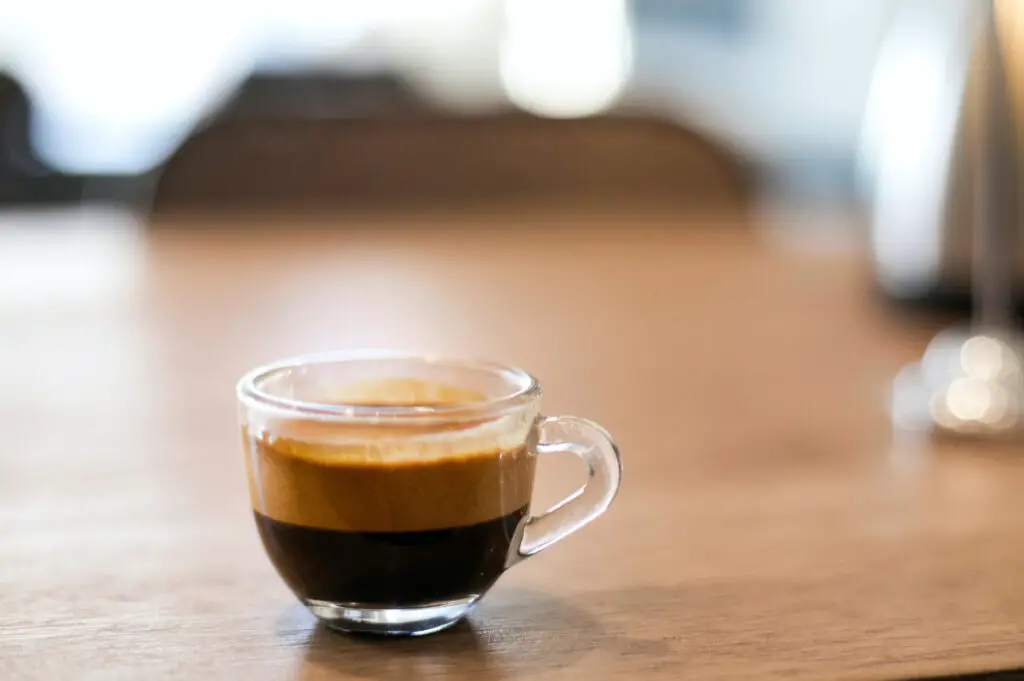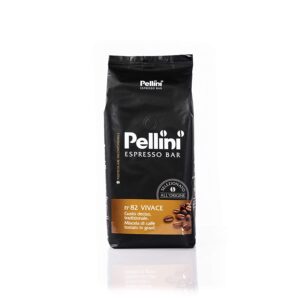
Recently I found myself staring at a shot of espresso that was about 10 minutes old. I pulled the shot myself and then got distracted by the news. Coming back into the kitchen, having completely forgotten about my coffee, I made eye contact with the shot glass. Two thoughts crossed my mind, should I just make a fresh coffee and do shots of espresso expire?
Shots of espresso don’t expire, although, their flavor and texture begin to change significantly after about 10 seconds. Even though the body and crema of the shot begin to mix, altering its flavor profoundly, that doesn’t mean the coffee has expired.
I think it’s important to establish what we mean when we say ‘expired espresso’ before going any further. When we’re talking about the caffeine content or potency of a shot, then no, espresso doesn’t expire. On the other hand, if we are referring to the taste and body of a shot of espresso, then we need to explore what time does to our shot and decide if that truly means the espresso has ‘expired’.
Does a Shot of Espresso Expire after 10 Seconds? The Myth Debunked
If you’ve ever worked at a large chain coffee shop or talked to any barista who’s been trained by ‘big coffee’, you’ve probably been led to believe that a shot of espresso ‘goes bad after 10 seconds’.
That’s simply not true and let’s use logic to debunk this myth.
On average it takes about 18-25 seconds to pull a shot of espresso. Wouldn’t that mean the shot begins to go bad before it’s even done brewing? Here is a follow-up, common-sense question; What if someone ordered an iced coffee with a triple shot of espresso? Wouldn’t that mean the first shot goes bad by the time the second is finished? Let alone the third?
Former coffee chain employees have chucked at the 10-second myth saying, “It was just a trick used to make us work faster”.
So, if the 10-second rule isn’t real, why do so many people around the coffee community still believe it?
Something does begin to change in a shot of espresso shortly after it’s pulled, and we need to acknowledge this chemical reaction. It certainly doesn’t mean the espresso has expired.
Some have said this is where espresso ‘begins to die’ or needs to be ‘saved’ by either water or milk.
What Happens to an Espresso If It’s Left “Unsaved”?
Pro baristas are taught to always serve espresso immediately as many people claim it’s at its best 30 to 40 seconds after being pulled. If no one is drinking the shot, it needs to be ‘saved’ with milk for a Latte or water for an Americano.
Unfortunately, there was no saving my glass of muck left out on the counter. That didn’t stop me from looking into what happened to my coffee. Did it look so dull because it’s cold? Or did something else, besides the temperature, change my espresso?
Shortly after the espresso is pulled it begins to change. If you stare at a clear mug or shot glass you will see a chemical reaction taking place right in front of your eyes.
First, you’ll notice a stringy trail of residue on the side of the glass. Then you’ll witness the crema beginning to disappear as it collapses on itself back into the darkness of the coffee. The absence of crema will have an impact on the flavor, but the shot hasn’t begun to alter its taste just yet.
As time continues to pass the coffee begins to mix with the oxygen in a process called oxidation. Here, the components that make up the espresso are releasing their chlorogenic acid. Turning the coffee more acidic often making the shot taste burnt or ashy.
That’s why coffee shops want their baristas to act quickly and serve the espresso right after it’s pulled or mix it with water or milk.
Does that Change the Taste?
I decided to run a little experiment at home and make a shot of espresso again. This time I pulled two shots of my favorite Lavazza Café Espresso, which I usually get from Amazon.
I really wanted to know how its flavor will change over time, so I let one sit for about 4-5 minutes and brewed another one fresh. I drank the hot espresso first.
Roughly 45 seconds after it was brewed the shot was slightly caramelly and sweet. There was no lingering aftertaste, just the standard warm feeling oozing down my body as the shot reached my belly.
Next, I had some water to cleanse my pallet and waited roughly another 30 seconds before I took the so-called ‘expired shot’.
From the moment the cooled down coffee reached my lips I could feel the difference, not in the temperature, but the texture of the shot.
What can only be explained as a ‘smack in the face’ the extremely vivid taste of espresso was bold and bittersweet. Followed by a lingering nutty aftertaste that lasted a couple of minutes.
Even though the first hot dose of espresso was more enjoyable I have to say the initial flavor of the second shot was surprising but didn’t disappoint.
In fact, I think it was the first time I got a real taste of my espresso. I wasn’t too pleased with the aftertaste, but the actual flavor of the espresso was fuller than I imagined.
The reason I could taste all the vivid flavors of the espresso is because the drink was closer to my body temperature. Our taste buds have a hard time deciphering the flavors of extremely hot or cold foods. In a weird way, this was the first time I tasted the real flavor of my espresso.
Quality Matters
I compared my results with some friends whom I convinced to try the same experiment, and some had completely opposite reactions.
I even spent some time on coffee forums trying to get some unbiased opinions about the subject. Obviously, I always knew the quality of my coffee beans mattered. When it came to espresso it was quite possibly the most important factor in the outcome of my experiment.
Every one of us who tried a cooled-down espresso made from quality beans had similar results. The shot was a bit harsher, less enjoyable, but the original flavor of the espresso persisted. Everyone who used lower quality coffee said their shot became an undrinkable mess in a matter of minutes.
As it often is, in the end, the quality of the coffee beans we used made the biggest difference.
My Final Verdict
Shots of espresso certainly don’t expire after 10 seconds. Especially in the caffeine content or potency sense of the world ‘expire’. They do however begin to change their complexion and flavor within a minute of being pulled.
I don’t recommend drinking cool espresso, stick to enjoying it hot and fresh from the press. If you have to mix the espresso with water and turn it into an Americano or whip yourself up a latte. If you really want to try something new, mix the shot with a few ice cubes in a blender and enjoy an iced espresso. That’s a simple way to salvage the shot since the water will mask most of the bitterness.
Although, remember what I said about the beans you used to make the shot in the first place.
Related Questions
How Many Shots of Espresso Can You Have in One Day?
According to European Food Safety Authority drinking more than 5 espresso servings in a day could lead to serious complications. Five single servings of espresso have 400mg of caffeine, which is the maximum daily dose as explained by the EFSA.
Do Coffee Beans or Grounds Expire?
No, coffee beans and grounds don’t expire in the same sense that meat or dairy products do. They can however lose their flavor and color when stored improperly. Wondering if you are making common mistakes when storing your coffee? This article will explain what makes coffee lose flavor. Take these steps to keep it as fresh as possible.
I’ve always seen coffee as a way of bringing people together. Everywhere I go people seem to enjoy a fresh cup of coffee and that’s what drives my passion. There’s always a new brew to master, and there’s always a new face to enjoy it with. Hitch a ride with me on a coffee-fueled adventure to find a perfect cup.


